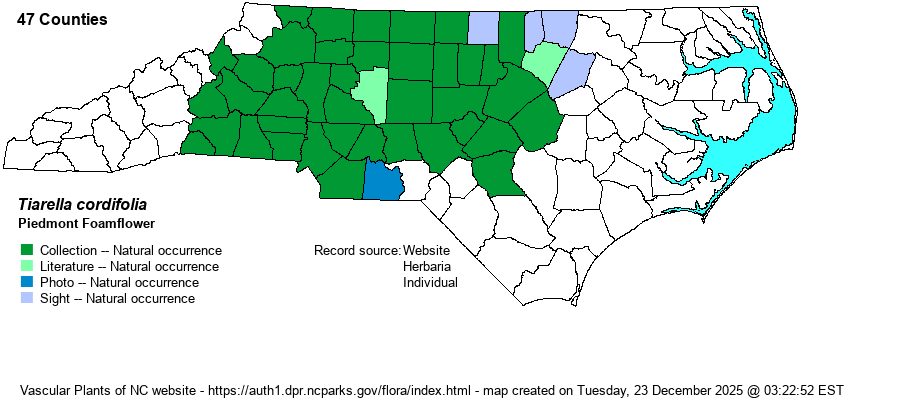| taxonName | relationship | relatedTaxonName | relatedTaxonRefText | relComments |
|---|
|
|
|
|
|
| Tiarella cordifolia | > | Tiarella cordifolia var. cordifolia | Gleason and Cronquist (1991) | |
| Tiarella cordifolia | > | Tiarella cordifolia var. cordifolia | Gleason (1952) | |
| Tiarella cordifolia | > | Tiarella cordifolia var. cordifolia | | |
| Tiarella cordifolia | > | Tiarella cordifolia var. cordifolia | Radford, Ahles, and Bell (1968) | |
| Tiarella cordifolia | > | Tiarella cordifolia var. collina | Gleason and Cronquist (1991) | |
| Tiarella cordifolia | > | Tiarella cordifolia var. collina | Gleason (1952) | |
| Tiarella cordifolia | > | Tiarella cordifolia var. collina | | |
| Tiarella cordifolia | > | Tiarella cordifolia var. collina | Radford, Ahles, and Bell (1968) | |
| Tiarella cordifolia | > | Tiarella cordifolia | Fernald (1950) | |
| Tiarella cordifolia | > | Tiarella cordifolia | Soltis in Kubitzki, Bayer, & Stevens (2007). | |
| Tiarella cordifolia | > | Tiarella cordifolia | Flora of West Virginia | |
| Tiarella cordifolia | > | Tiarella cordifolia | Soltis in Kubitzki, Bayer, & Stevens (2007). | |
| Tiarella cordifolia | > | Tiarella wherryi | Fernald (1950) | |
| Tiarella cordifolia | > | Tiarella wherryi | Soltis in Kubitzki, Bayer, & Stevens (2007). | |
| Tiarella cordifolia | > | Tiarella wherryi | Soltis in Kubitzki, Bayer, & Stevens (2007). | |
| Tiarella cordifolia | > | Tiarella cordifolia var. austrina | | |
| Tiarella cordifolia | > | Tiarella cordifolia var. austrina | Soltis in Kubitzki, Bayer, & Stevens (2007). | |
| Tiarella cordifolia | > | Tiarella cordifolia var. austrina | Soltis in Kubitzki, Bayer, & Stevens (2007). | |
| Tiarella cordifolia | > | Tiarella macrophylla | Small (1933, 1938) | (type a combination of Heuchera and Tiarella) |
| Tiarella cordifolia | > | Tiarella wherryi | Soltis in Kubitzki, Bayer, & Stevens (2007). | |
| Tiarella cordifolia | > | Tiarella wherryi | Soltis in Kubitzki, Bayer, & Stevens (2007). | |
| Tiarella cordifolia | > | Tiarella cordifolia var. typica | Soltis in Kubitzki, Bayer, & Stevens (2007). | |
| Tiarella cordifolia | > | Tiarella cordifolia var. collina | Soltis in Kubitzki, Bayer, & Stevens (2007). | |
| Source: Weakley's Flora |

